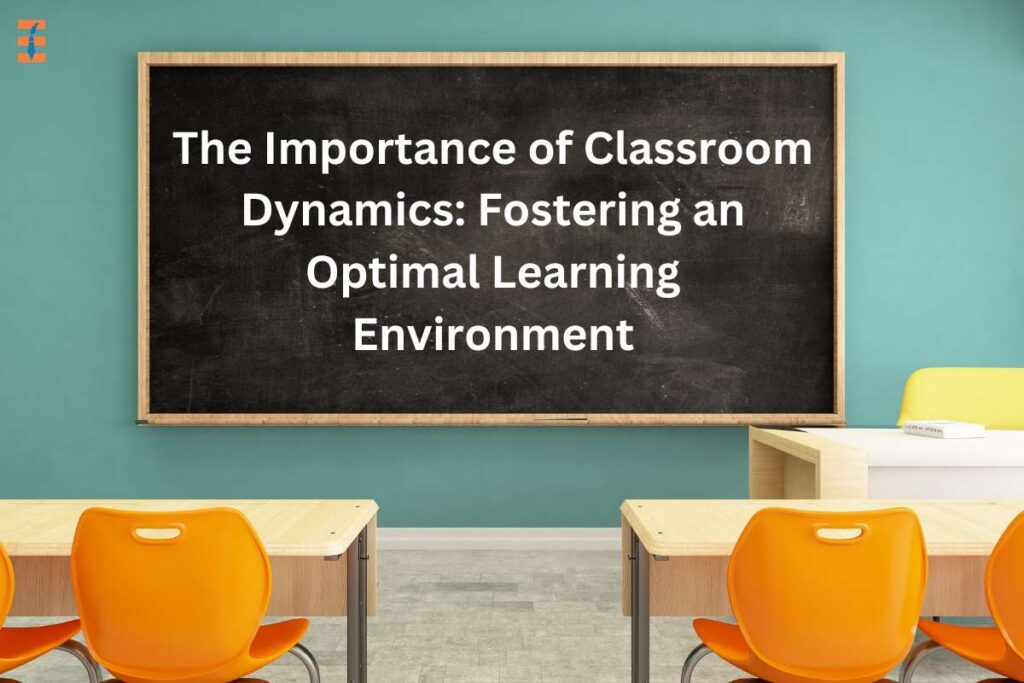Classroom dynamics play a vital role in the educational journey, as they involve complex interactions between students and teachers. These interactions have a profound impact on student’s academic success, social abilities, and emotional health. Creating a positive and engaging classroom environment is essential for educators, as it fosters a sense of belonging and teamwork, resulting in better academic achievements and a deeper grasp of the subjects. Throughout this article, we will delve into the significance of classroom dynamics and how they positively shape students’ overall learning experiences.
Here Are 4 Importance Of Classroom Dynamics And How They Positively Shape Learning Experiences:
1. A Positive Classroom Environment
The classroom is not merely a space for transmitting knowledge; it serves as a microcosm of the world, where students learn valuable life skills such as teamwork, empathy, and effective communication. A positive classroom environment encourages students to express themselves freely, participate actively, and take intellectual risks without fear of judgment.

When teachers foster an inclusive and respectful atmosphere, students feel more motivated and engaged, leading to higher levels of enthusiasm for learning. An atmosphere of acceptance and mutual respect ensures that every student’s voice is heard and appreciated, enhancing their self-esteem and confidence.
In the classroom, learning goes beyond textbooks and exams – it’s a place where students discover essential life skills that shape their characters and prepare them for the world. Creating a positive classroom environment is like crafting a little universe where students learn to work as a team, show empathy, and communicate effectively.
When students feel safe and encouraged to express themselves freely, it sparks their curiosity and enthusiasm for learning. Teachers play a vital role here by fostering inclusivity and respect, ensuring that every student’s voice is heard and appreciated. This boosts their self-esteem and confidence, empowering them to take intellectual risks and explore new ideas without fear of judgment.
In this nurturing atmosphere, students develop a sense of ownership and responsibility for their education. They actively participate in discussions, valuing diverse perspectives, and embracing the beauty of differences. As teachers demonstrate respect for each individual, students learn the importance of empathy and understanding, building a strong foundation for healthy relationships inside and outside the classroom.
This positive dynamic not only enhances academic performance but also cultivates emotional intelligence. Students become better at managing stress, coping with challenges, and showing compassion towards others. These emotional skills are like superpowers, making them resilient and adaptable, ready to face the ups and downs of life with courage and grace.
With a constructive feedback loop in place, students view mistakes as opportunities for growth, fostering a growth mindset that propels them forward. They seek help and guidance without hesitation, knowing their teachers will support and encourage them every step of the way.
In essence, a positive classroom environment nurtures not just academic growth but also personal development. By embracing empathy, inclusivity, and respect, educators create a thriving space where students flourish – emotionally, socially, and intellectually. These invaluable life skills become the building blocks of confident and compassionate individuals, ready to make a positive impact on the world.
2. Facilitating Effective Learning
Classroom dynamics have a profound impact on the learning process. When students feel connected and supported by their peers and teachers, they are more likely to be receptive to new ideas and concepts. Collaborative activities and group discussions can provide diverse perspectives, fostering critical thinking and a deeper understanding of the subject matter.

Furthermore, positive classroom dynamics create a conducive learning environment where students can ask questions, seek clarification, and explore their curiosity freely. Teachers play a pivotal role in encouraging curiosity and nurturing students’ desire to learn, thereby promoting lifelong learning habits.
3. Building Stronger Teacher-Student Relationships
In a classroom with healthy dynamics, strong teacher-student relationships are cultivated. These connections go beyond the subject matter and enable teachers to understand the unique needs and strengths of each student. When students feel supported and valued, they are more likely to seek guidance, share their struggles, and actively participate in class discussions.
For teachers, understanding their students’ learning styles and preferences allows them to tailor their instructional methods, enhancing the overall learning experience. Moreover, teachers become more approachable, encouraging open communication and a sense of trust within the classroom.
4. Enhancing Social and Emotional Skills
Positive classroom dynamics create a safe space for students to develop essential social and emotional skills. Through teamwork, group projects, and peer interactions, students learn to collaborate, negotiate, and resolve conflicts effectively. These skills are invaluable in the real world, where teamwork and interpersonal relationships play a crucial role in personal and professional success.

Furthermore, a supportive classroom environment nurtures emotional intelligence, helping students manage stress, cope with challenges, and develop empathy and compassion for others. These emotional skills contribute to better mental health and overall well-being, making students more resilient and adaptable in the face of adversity.
In the world of education, fostering positive classroom dynamics creates a nurturing space for students to grow socially and emotionally. This safe environment encourages them to hone essential skills that will serve them well beyond the classroom walls. Through collaborative activities, group projects, and peer interactions, students gain valuable experience in teamwork, negotiation, and conflict resolution, which are crucial for success in both personal and professional spheres.
Moreover, the supportive classroom atmosphere plays a significant role in nurturing emotional intelligence. As students learn to manage stress, face challenges, and develop empathy and compassion for others, they build a foundation for improved mental well-being and overall resilience. These emotional skills are like life’s toolkit, empowering students to navigate various life challenges with grace and adaptability.
By embracing positive classroom dynamics, educators can empower their students to flourish not just academically but also as well-rounded, emotionally intelligent individuals ready to face the world with confidence.
Conclusion
Classroom dynamics significantly influence the educational journey of students, impacting their academic performance, social skills, and emotional development. By cultivating a positive and engaging classroom environment, teachers can create a thriving space where students feel valued, supported, and motivated to excel.
With the help of these positive interactions, teachers can not only find improved learning outcomes, but the students will also be able to become well-rounded individuals, having learned all the essential life skills. When you understand the importance of classroom dynamics, and when you take intentional efforts to increase them, you will notice that you can unleash the full potential of your students. This also helps the students to thrive academically in their future goals.

